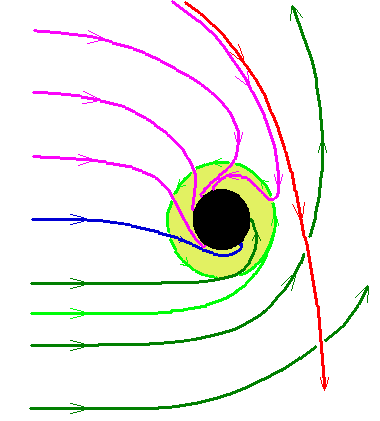

Also, more importantly for our discussion, the metric gives a measure of the lengths of basis vectors at a point. The components of this metric tensor (at any point) are defined as the dot product between basis vectors: Since the dot product is a measure of how much two vectors are “aligned” (for more on this, you can check out this article on the physical meaning of the dot product), this means that the metric tensor measures the alignment of basis vectors at any given point. We describe how these basis vectors are different from point to point by using a metric tensor, which is essentially just a function that allows us to define a notion of length on any curved manifold. Here, we have again a 2-dimensional spacetime with e t denoting the basis vector in the time direction and e x the basis vector in the x-direction.

However, if the spacetime and thus, the coordinate system is curved (such as in a gravitational field in general relativity), these basis vectors are going to vary from point to point, which means their length and direction aren’t constant anymore. In a coordinate system, there are always basis vectors, which are used to generally describe any vector and its components in that system. Note that in reality, spacetime is 4-dimensional with one time dimension and three spacial dimensions, but this cannot really be pictured in any sensible way.Īnyway, if we wish to actually describe a point (these are called events) on a curved spacetime manifold, we need coordinates (one time coordinate and three space coordinates) or a coordinate system. This is a sketch of a curved spacetime manifold, which has a time dimension and a spacial dimension. If you wish to understand the underlying ideas behind this, I recommend reading this introduction to general relativity.

The effects of gravity are then modeled by the curvature of this spacetime manifold. Essentially, this means that both space and time are “combined” together into a 4-dimensional geometry known as a manifold. In general relativity, we model everything through a concept called spacetime.
#PROPER TIME FOR SOMEONE FALLING RADIALLY INTO A BLACK HOLE PDF#
In case you’d want an ad-free PDF version of this article (an my other general relativity articles), you’ll find it here, available as part of my full General Relativity Bundle. We’ll also look at some concrete examples of how much time actually slows down near a black hole as well as how different properties of black holes affect this (such as electric charge and spin). In this article, we’ll be discussing all about this slowing down of time -thing in great detail (namely the interesting geometry behind it) as well as looking at some consequences of this phenomenon (such as how it affects aging). According to the theory of general relativity, this phenomenon is due to the gravity of the black hole curving spacetime in a way that affects all measurements of time and space near the black hole. Time slows down near a black hole due to the extremely strong gravitational field of the black hole. One of the more interesting predictions of the theory is that even time will slow down near a black hole. Black holes are some of the most intriguing, yet not very well-understood objects in the universe, which are best described by Einstein’s theory of general relativity.


 0 kommentar(er)
0 kommentar(er)
